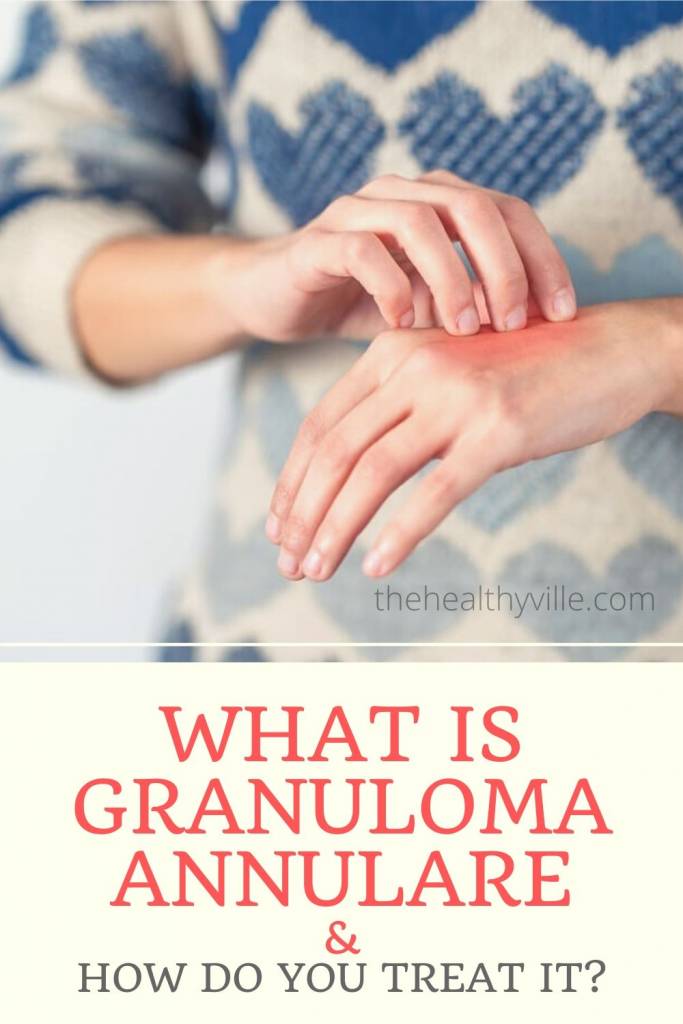What is granuloma annulare? Is it a serious disease or can you treat it with homemade remedies? Find out all the answers soon.
Granuloma annulare or annular granuloma is a benign and chronic disease that affects the skin. It affects, especially, young women. Here we tell you some important details about this pathology, including its causes and treatments.
What is granuloma annulare?
As we have already said in the introduction, annular granuloma is a skin disease. It is a chronic pathology, that is, who suffers from granuloma annulare probably has intermittent outbreaks throughout his life.
These outbreaks usually appear and disappear spontaneously. Although it is a chronic disease, it is benign. Granuloma consists of the appearance of lesions that may be skin-colored, pink or bluish.
These lesions appear elevated on the skin and form a circle with the center somewhat more depressed and pale. This is why it is called “annular”, since it is shaped like a ring.
Who does it affect and what is its cause?
This disease affects mostly women under 30, although it can appear in anyone. To date, its cause is not well established, but it is believed to be due to an abnormal response of the immune system.
Situations such as insect bites, prolonged exposure to the sun, some vaccines or drugs could lead to excessive activation of the immune system, causing these types of lesions to appear.
It has also been linked to diabetes or thyroid diseases, although this relationship is not clear and occurs, especially in the extended forms of the disease.
Read more: What Does Prediabetes Mean and How to Control It?
There is a peculiar form of granuloma that appears in less common places and produces pain. These forms can be related to tumors or HIV infection.
Symptoms and diagnosis
One or multiple lesions may appear in the manner described above. Most commonly, they are limited to hands and arms, or legs and feet. The forms that affect the whole body are rare and infrequent and occur, especially in older patients.
These lesions do not usually produce symptoms, although sometimes itching may appear.The diagnosis is usually clinical by a specialist. On some occasions, if the specialist has doubts about the diagnosis, it may require a biopsy of the skin to confirm it.
What is your treatment?
Usually, since the lesions do not produce any symptoms, they are benign and disappear by themselves, the recommended treatment is observation.
However, when they produce a lot of itching, the lesions are very extensive or are related to other diseases, the specialist may propose some treatment.
Among the most used treatments in this pathology are topical corticosteroids (in the form of cream, emulsion, etc.) or the destruction of the lesion with PUVA rays, cryosurgery or CO2 laser. It will be the doctor who decides the best treatment in each case.
Prognosis and consequences
The duration of the lesions can vary between weeks and even decades. Usually, up to half of the time they heal in the first two years. However, in many of these patients, the lesions will reappear throughout their life. In the following outbreaks, it is normal for lesions to occupy less space and last less time.
In summary
Although annular granuloma is a benign pathology, many times the lesions do not heal in a short period of time. It is always advisable to go to a specialist to confirm the diagnosis and decide the best treatment to follow.
Don’t forget to SHARE what is granuloma annulare with your friends and family on your social networks!

